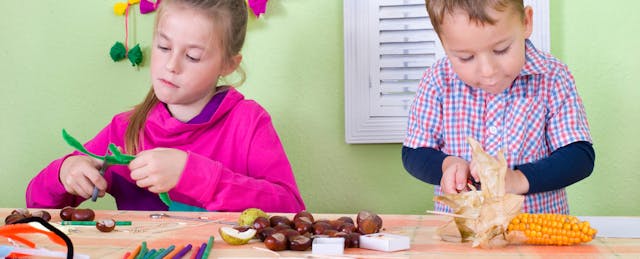Scientists use computers all the time to create digital prototypes of complex systems and predict outcomes. Biologists, for example, simulate ecosystems on computers to predict how human intervention could affect a native animal population. Students, however, rarely get the opportunity to model systems before creating them in the real world.
We were fortunate enough to assist educators Aline Baissac and Nikita Brougher at River Road/El Camino del Rio Elementary School on a digital prototyping project. To learn about the physics of collision, students created Rube Goldberg machines on computers first, then created their own physical models.
The Digital Prototype
The teachers introduced physics not via a textbook or lecture, but with Contraption Maker, a game where you can create your own digital Rube Goldberg machines. They guided the students through the first tutorials of the game, which asked basic questions like, “How would you expect a bowling ball versus a soccer ball to bounce?” Students would make predictions, then test their theories.

Once students got the hang of the mechanics of Contraption Maker, they were allowed to go through as many tutorial puzzles as they could in a 30-minute period. Students explored the physics behind moving objects that they could not practically test in a classroom, such as accelerating rockets. The teachers and I used this time to ask open-ended questions with students one-on-one. What happens when two objects of the same mass hit each other, for example? How does this affect the direction and rate of speed at which the objects are moving? The students offered replies like, “It’s like car crashes; when two cars smash, sometimes the little car gets more crushed.”
By creating and observing physics on the computer, they were able to come to their own conclusions on how collisions affect the movement and speed of objects.
Building Rube Goldberg Machines
Once prototyping finished, the kids moved on to creating Rube Goldberg machines in teams of three to four. They used common materials such as cardboard boxes, tubes, plastic forks, toothpicks, playing cards and tape. Students had to create a machine that:
- featured a marble rolling down a slope at least 100 cm off the ground;
- traveled at least 50 cm without touching the table it stood on; and
- created a series of collisions that would slow the marble down.
The most successful machine would be the one that allowed the ball to travel the longest amount of seconds before hitting the table.
The result was a chaotic but fervent attempt by all students to experiment and create the best machine. Teams differed in approach and style. The machine with the longest running time, shown below, had a 4-second marble run. The ball started rolling down the black tube, through a playing card maze, and around two sharp turns before finally falling into the cup.

In contrast, this runner-up used felt and plastic utensils as its main “slowing down” feature. The marble ran on this machine for 3.5 seconds.

Learning Outcomes
At the end of the lesson, students were asked to reflect upon what they learned about collisions. As one student gave an observation to the class, others chimed in to create a body of knowledge for the entire class:
“The felt material helped slow down the ball more than the forks and spoons, which we didn’t think would happen.”
“Now I understand why water slides have high walls around curves. You need them so the people don’t fall out!”
Digital prototyping is a great introduction to scientific experimentation. It gives students a safe place to try and fail without consequences, and allows students to learn basic principles on their own before tackling a real world problem. And best of all, it gives students a chance to learn ideas about science based on their own observations and experiences.


